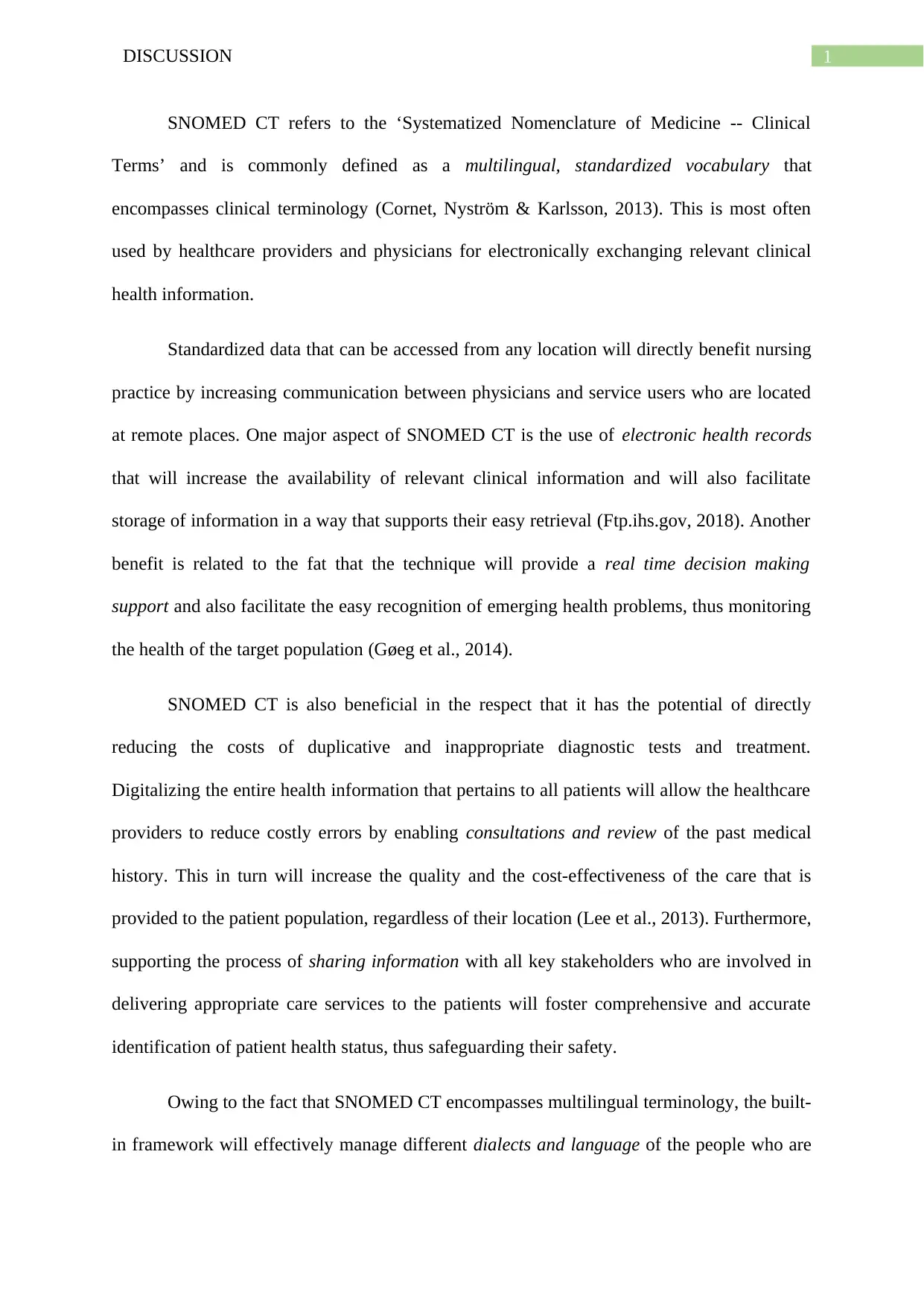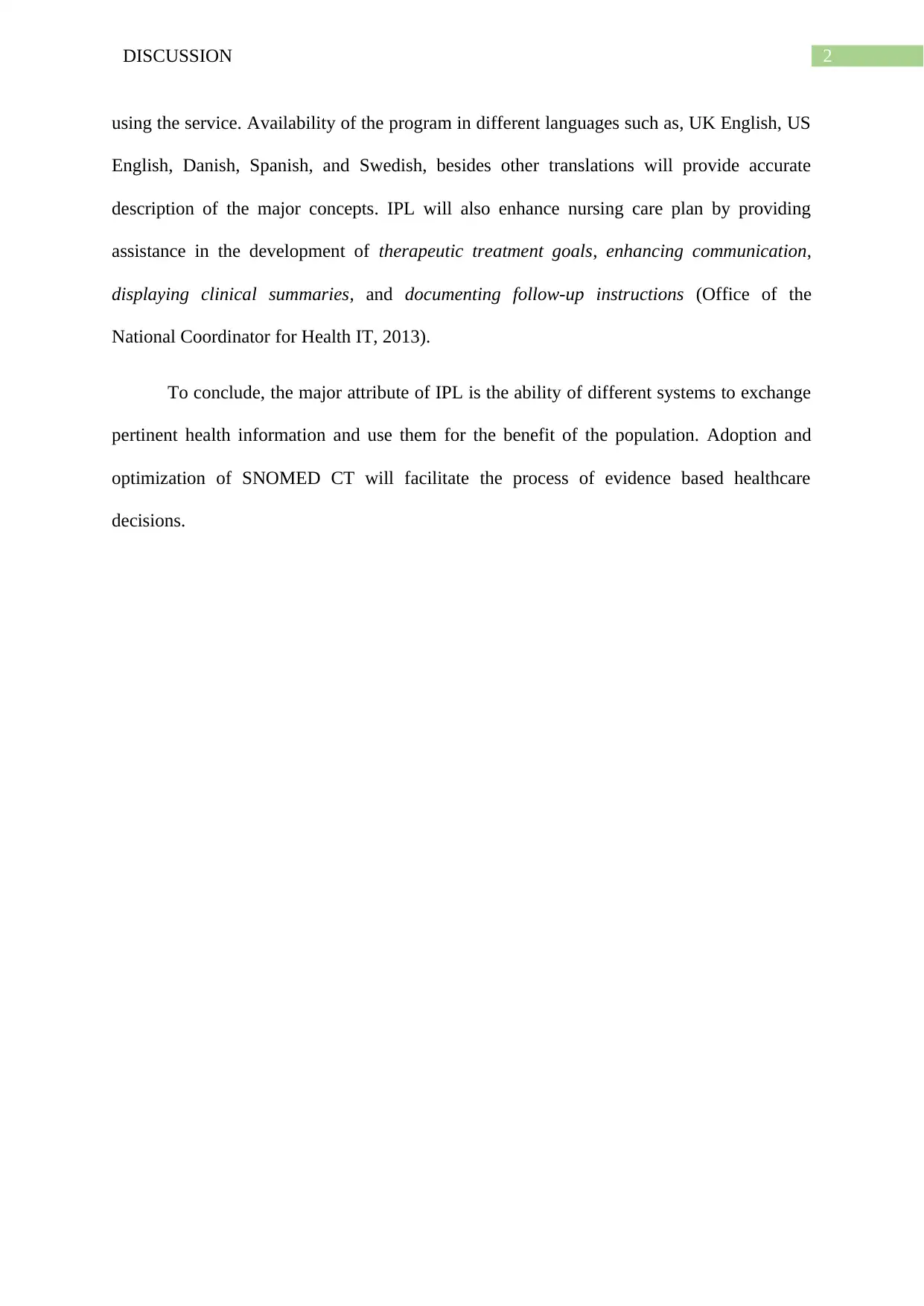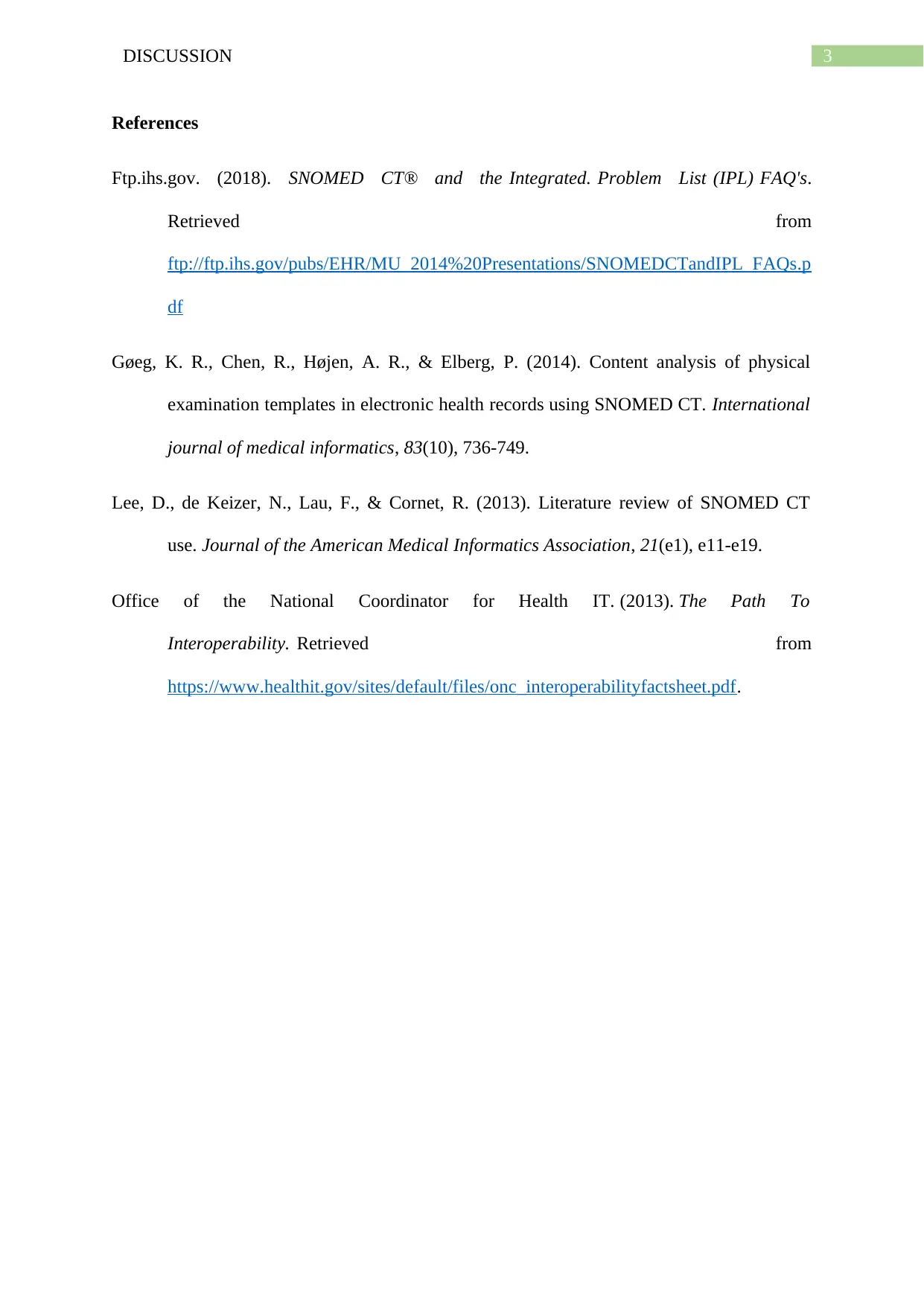SNOMED CT and the Integrated Problem List: A Nursing Perspective
VerifiedAdded on 2023/06/07
|4
|620
|388
Discussion Board Post
AI Summary
This discussion post focuses on SNOMED CT (Systematized Nomenclature of Medicine - Clinical Terms) and its role in enhancing healthcare interoperability. It highlights the benefits of standardized terminology for exchanging reliable clinical information between healthcare providers. The discussion emphasizes how SNOMED CT, particularly through the Integrated Problem List (IPL), facilitates accurate health information exchange, improves communication, and supports real-time decision-making. It further explores how SNOMED CT reduces costs by minimizing duplicative tests and errors, ultimately improving the quality and cost-effectiveness of patient care. The post also underscores the importance of multilingual support within SNOMED CT and its potential to enhance nursing care plans by assisting in the development of therapeutic goals and improving clinical documentation. The conclusion emphasizes that the adoption and optimization of SNOMED CT are essential for evidence-based healthcare decisions.
1 out of 4











![[object Object]](/_next/static/media/star-bottom.7253800d.svg)